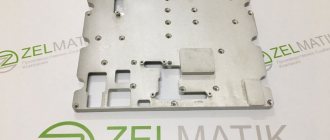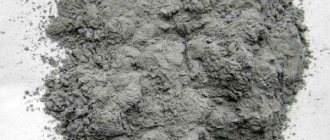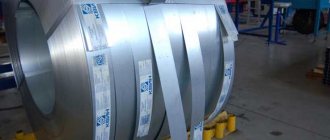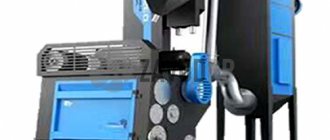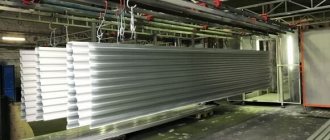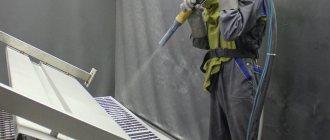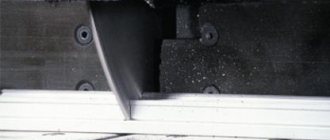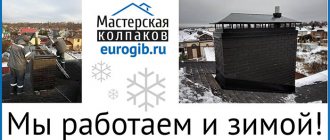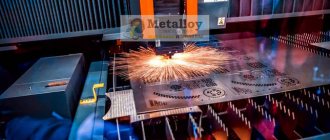We carry out anti-corrosion treatment of metal on a turnkey basis in accordance with the SRO certificate
The range of services includes:
- assessment of the condition of metal structures;
- selection of technology and materials, preparation of a processing project;
- anti-corrosion treatment of metal, separately or in combination with fire retardant treatment;
- quality control;
- applying the finishing coating;
- When carrying out fire retardant treatment, we hand over the facility to the Ministry of Emergency Situations ourselves.
"Tehstroygarant" provides anti-corrosion protection of metal and reinforced concrete structures for any purpose.
Anti-corrosion treatment is often ordered from us along with fire protection of metal structures.
How metal structures are processed
To protect metal structures, several types of treatment are used, for example:
- Thermal insulating plaster. It does not support combustion and will perfectly protect the surface from heat and open fire.
- Asbestos coverings. They have long been used as protection against overheating. Previously, they were wrapped around metal stove pipes.
- Facing with special non-combustible materials - fireproof screens.
- Applying special paste, paint, coating to the metal surface.
To better protect a structure from fire, several protection methods can be used at once.
Thus, in shopping centers, in addition to covering ceilings and floors, protective screens are used to block the spread of fire and localize the location of the fire.
We produce anti-corrosion protection for any metal structures
- metal bases and foundations;
- pipelines for any purpose;
- liquid reservoirs, tanks;
- metal structures of industrial enterprises;
- building metal structures;
- steel reinforcement, metal frames;
- berthing facilities, ships;
- metal roofs.
We will develop an optimal technical solution for you, perform anti-corrosion treatment of metal structures without involving third-party specialists, and provide a guarantee on materials and work performed.
Call: 8 (495) 150-5-987 and consult for free!
To which building structures are protective materials applied?
To minimize the consequences of a fire and ensure long-term ability to maintain shape and bear loads, structural fire protection of metal structures is applied:
- On the supporting structures of the building - columns, supports, beams;
- Roofing construction systems - rafters, reinforcement beams, tie-down elements of systems, roof metal structures are processed;
- Frame parts of the structure - superstructures, attics, attics, interfloor ceilings;
- Details of wall columns and interfloor beams; all other structural elements that make up load-bearing elements and safety systems.
Separately, measures are being taken to strengthen the structural fire protection of the connection points of the load-bearing elements of the building frame.
Applying a protective layer of plaster
Structural fire protection of metal structures applies equally to industrial, office and residential premises. High sanitary requirements and fire safety standards require protection of systems such as ventilation and internal pipelines of the building, which means that these metal structures must be painted with fire-resistant paint.
The conditions for applying protection to the main elements of a building require that the standard indicator of the maximum resistance standards of these elements be observed in accordance with the world classification:
- For walls, main load-bearing elements of the structure, columns - R120;
- For floors of interfloor, attic, basement spaces - R160-R45;
- Flooring with insulation - R 30;
- For trusses, beams and roof purlins - R 30;
- For staircases - R120-R90;
- For flights of stairs and landings of internal stairs - R60-R45;
Where R means the designation of the loss of the structure’s load-bearing capacity, and the numbers are the time from the moment the metal is exposed to fire until the critical temperature is reached, at which inevitable deformation begins.
At the same time, buildings of the fourth degree of fire resistance - R15 - have the lowest coefficient.
We effectively prevent irreversible changes in the structure of metal structures
Metals, especially ferrous ones, are exposed to aggressive environments during operation. The result of such exposure is corrosion - an irreversible change in the structure of the metal. As a result, there is a loss of strength, load-bearing capacity, integrity, and functional properties.
Main types of corrosion:
- liquid. The aggressive factor is moisture. The corrosion process is accelerated by salts contained in sea water and other chemically active substances dissolved in water;
- atmospheric. Here, too, the main effect is water, only in the form of vapor. Increased levels of chemically active substances in the atmosphere enhance corrosion;
- soil The changes affect foundations and other underground structures. The main aggressive factor is groundwater; the rate of corrosion depends on the composition of the soil.
Types of corrosion also differ in the result, i.e. according to the nature and intensity of damage:
- surface – local areas of rust on the surface of the structure;
- cracks of different depths;
- oxidation of only one of the alloy components;
- extensive rust affecting the metal over the entire area and to great depth.
How to protect metal from corrosion?
For all metal structures, the simplest and most affordable method of anti-corrosion protection of metal is the use of special paints and enamels. Paint and varnish anti-corrosion coatings have a number of advantages compared to other types of protective materials:
- ease of application;
- the ability to process metal structures of large dimensions and complex configurations;
- coatings are economical, have high protective properties, and can be restored during operation;
- the possibility of obtaining a coating of any color;
- low cost compared to other types of protective coatings.
Examples of anti-corrosion treatment work performed
Fire retardant and anti-corrosion treatment in the elite residential complex Polyanka 44
Fire protection of load-bearing metal structures and anti-corrosion treatment of the construction site of a residential complex with an underground parking lot “Polyanka 44” has been completed. The reconstruction of the residential complex is being carried out by a large general contractor "CODEST". The most modern and reliable fireproof materials Promat were used.
Read more >>
Fire protection and anti-corrosion treatment of non-residential premises of the Zvezda film studio
"TehStroyGarant" carried out fire protection and anti-corrosion treatment of load-bearing metal structures and engineering systems in the premises of the TV and film studio of the Zvezda TV channel with a total area of 2421.9 sq.m. The work was carried out in difficult access conditions.
Read more >>
Anti-corrosion treatment in the Boiler House on the territory of the military-patriotic park in Kubinka
We completed anti-corrosion treatment of a total area of 3000 m of the boiler room for the heat supply system of the Military-Patriotic Park of Culture and Recreation of the RF Armed Forces “PATRIOT” in the city of Kubinka, Moscow region.
Read more >>
VIEW ALL PROPERTIES
Stages of work
So, when choosing a thermally expanding coating, you must:
- Pre-clean the load-bearing areas from corrosion and secretions; the surface is degreased.
- After this, the customer selects the thickness of the applied coating and the craftsmen begin work. If the layer needs to be applied more than 1 mm, the coating must dry for 12 hours, after which another layer of coating is applied.
The thicker the coating, the more fire protection a structure has, and the longer hours it can withstand open fire.
Where are our services needed?
To protect metal structures from destruction, we perform anti-corrosion treatment:
- in hazardous industries - chemical and oil industry enterprises;
- in industrial and residential development;
- when installing pipelines for the oil and gas industry and pipelines for water supply;
- in shipbuilding and for anti-corrosion protection of port facilities.
Our licenses
License No. 50-B/00378
SRO extract N0000627
More details
Table graphs
The columns contain the following data:
- When specific work was performed, the date is indicated.
- The name of the elements undergoing the connection.
- The material used to factory protect this area.
- Joining location - the number is determined according to the diagram or drawing of the section in question.
- If delivery and acceptance of work was carried out, a note about this fact.
- The full name of each of the connected elements.
- Material used for anti-corrosion protection of welded joints: zinc, aluminum, protective primers, varnishes, glass or polymers.
- Environmental conditions under which the coating was applied: precipitation, temperature, humidity.
- Full name of the employee who completed the task.
- Full name of its manager.
- Coating thickness.
- Results of inspection of the work performed.
- Signatures of the performer and his boss.
- If there are comments that appeared during inspection by the master, designer's supervision, customer organization, etc.
We carry out work in accordance with standards for anti-corrosion treatment of metal structures
When anti-corrosion treatment of metal, we are guided by the requirements of the following documents:
- GOST 21.513.83 – features of anti-corrosion protection depending on the functionality of the structure and the presence of aggressive factors;
- SNiP 3.04.03-85 and its updated version SP 72.13330.2016 – protection of metal and reinforced concrete building structures from corrosion;
- GOST 9.402.2004 and 9.402-80 – preparation of metal surfaces for anti-corrosion painting.
The first part of SNiP/SP is devoted to surface preparation. This is a fundamentally important stage of anti-corrosion treatment: the durability of the protection depends on the quality of preparation. This process includes:
- removal of burrs, sagging, welding spatter, cracks, irregularities;
- cleaning from rust, dirt, scale, old paint;
- degreasing;
- removal of active chemicals – alkalis, acids, etc.;
- Roughening the surface to improve adhesion.
Surface cleaning methods:
- sandblasting;
- hydrosandblasting;
- shot blasting;
- using an abrasive tool;
- alkaline;
- acidic;
- using organic solvents (white spirit, gasoline);
- oxidation;
- phosphating;
- chemical etching;
- gas plasma treatment (allowed for metal thickness from 6 mm);
- thermal;
- ultrasonic;
- washes.
GOST also regulates the degree of cleaning, from 1 to 4, depending on the type of anti-corrosion coating.
The joint venture further describes the technology for applying different types of protective coatings:
- paint and varnish;
- mastic, putty, self-leveling;
- based on liquid rubber;
- pasting (bitumen, polymer);
- gumming;
- metallization and combined;
- facing and lining.
The final part of the document provides methods for quality control of finished anti-corrosion coatings.
We also offer fire retardant treatment of metal and wooden structures and fire protection of air ducts. Work experience - 10 years. Hundreds of completed projects.
Call: 8 (495) 150-5-987 and consult for free!
The effectiveness of protection depends on the thickness of the coating
You cannot entrust the application of such a coating to an ordinary painter, since the uniformity of application of fire protection and the complete coverage of all joints and cavities are of great importance.
To do this, you should contact a company that has specialized approvals for this work.
About 1 mm – group 4 protection time 45 minutes. 5 protection group 30 minutes with a coating thickness of 0.6 mm. This is a special water-dispersed paste based on ammonium polyphosphate.
Drying time between layers is at least 12 hours. General drying of the surface is from 10 to 15 days. The service life of the coating is at least 25 years.
Classification of metal anti-corrosion protection methods
There are passive and active anti-corrosion protection. Passive anti-corrosion protection of metal is divided into two classes:
- corrosion inhibitors - substances that form a protective layer on the surface of the structure;
- protectors are substances that are susceptible to the influence of aggressive environments. An additional covering layer is formed between the medium and the protected structure.
Active anti-corrosion protection technologies:
- hot galvanizing – coating the surface with a layer of molten zinc. The method is particularly suitable for the treatment of ships and tanks;
- galvanic (electrochemical) galvanizing – a zinc coating is formed during the electrolysis process. Mainly used for small and medium-sized parts;
- thermal diffusion galvanizing - surface treatment with zinc powder at high temperatures (290-450 degrees);
- aluminizing – aluminum spraying using a ferroaluminum powder mixture;
- faoliting (faolite is an acid-resistant plastic coating);
- alloying – the alloying alloy contains substances that reduce the chemical activity of the metal;
- electrochemical anti-corrosion protection. A sacrificial anode made of metal with strong electronegative properties is connected to the enclosed structure. Polarization reduces the rate of electrochemical corrosion process on the surface of the structure. The method is suitable for protecting pipelines and pile foundations;
- deaeration of the environment, reducing its aggressiveness.
Anti-corrosion coating of metal (metal structures)
Unfortunately, the metal surface is often subject to corrosion; these are the laws of nature. Corrosive processes cannot be eliminated; there are only ways to stop them. These include anti-corrosion metal coating. The most common anti-corrosion protection is paint coating.
Advantages of working with our company for anti-corrosion protection of metal structures:
- Guarantee of high quality of surface preparation and coating application in accordance with the norms and requirements of ISO standards, which ensures the unconditional quality of coatings and, as a result, the economic benefit of the customer.
- When cleaning and preparing structural surfaces, we use only high-performance machines and devices made in the USA and Europe, which ensures reliable and trouble-free operation on site.
- Due to the fact that the work mainly uses the method of industrial mountaineering, the customer will not have to incur additional costs for lifting equipment and installation of scaffolding. In cases where the method of industrial mountaineering is not possible, our own scaffolding, towers, and cradles are used.
- The use of modern, powerful coating equipment made in the USA allows for high-quality and quick application of polymer materials of almost any viscosity, both hot and cold application.
- Quality control of painting with anti-corrosion paints and varnishes is carried out visually or using special instruments in accordance with ISO standards. All devices undergo regular verification by state metrology authorities.
- Internal quality control is organized at a high level. Work is handed over to the customer only after our own quality inspectors have completed the necessary control measures.
- The work is carried out by high-level specialists who have all the necessary qualifications and permits to carry out the work.
- The company provides a warranty for anti-corrosion protection of 5 years.
- The company is a design organization. Our designers will be able to select the optimal material option in terms of price/quality, depending on the capabilities and wishes of the customer.
- All work is accompanied by the development of work production projects, technological regulations, as well as technological maps for monitoring the production of work.
Range of services
Using modern technologies in the field of anti-corrosion protection, our company provides the following activities:
- technical assessment and analysis of the condition of metal structures;
- drawing up a technological plan for anti-corrosion protection taking into account the customer’s requirements and the timing of the facility’s commissioning;
- provision of protective paint and varnish coatings and special equipment;
- performing anti-corrosion protection;
- control over the execution of work;
- further maintenance of the facility.
We offer modern means and technologies for anti-corrosion treatment of metal structures
We use several anti-corrosion protection technologies in our work:
- painting - applying primer and anti-corrosion paint;
- galvanizing – coating a metal surface with a layer of zinc;
- aluminization;
- Faolitting;
- liquid rubber treatment – application of a two-component elastomer to the surface;
- electrochemical processing.
We select the appropriate method and material depending on the following factors:
- design functionality;
- terms of Use;
- type of metal, its features;
- type of aggressive influence;
- price of material and processing.
The most popular materials:
- weather-resistant anti-corrosion alkyd enamel PF-115 (Lakra);
- two-component epoxy primer-enamel AntikorKhim (JSC PKF Spectr);
- rust converters;
- cold galvanizing compositions.
We have already protected more than 70 objects and guarantee increased durability of load-bearing structures
Call 8 (495) 150-5-987
Reliability of this preventive measure
Fire-retardant paint or paste is a proven method of surface protection, which is why many customers choose it. It is quite simple to implement, but it is necessary to carry out the entire chain of work correctly.
The paint must be of a certain thickness, which can then be measured by specialists.
The larger the layer of special paint, the higher the fire protection of a given object. On average, prices for fire protection depend on the volume of work performed and the brand and manufacturer of these materials. And also on the number of layers of paint applied to the surface.
You should not skimp on quality, because what is at stake is not only the protection of structures from damage, but also human lives.
Application of fire retardant plaster
Machine application of protective plaster on ceiling structures
Protection of support columns, wall and internal columns supporting floor beams can be done in the form of plaster.
The thermal protective properties of the plaster composition applied to a 30 mm thick support provide protection of the metal from heating for 30-45 minutes. The metal is heated at this time to a temperature of 100-120 degrees. Over the next 30 minutes the temperature rises to 300 degrees. The compositions used for the work are Firex, Knauf, and Phoenix. In addition to metal, plasters are used to protect wood and concrete.
Installation of mineral wool insulation
Basalt wool mat for thermal insulation of a metal column
When installing a multilayer type of thermal insulation from mineral wool with a density of 165 kg m3, 90 mm thick and an upper decorative layer of plaster, the heating dynamics of the metal will be as follows:
- 0-1 hour - the metal temperature reaches 100 degrees;
- 1-1.5 hour - temperature rise to 300 degrees;
- 1.5-2 hours - the temperature rises to 400 degrees;
After plastering, painting is carried out with heat-resistant paint. The most popular products of this type of product are rockwool products - basalt foil rolls, stoebich - preventive protection systems, fire curtains, TechnoNIKOL - rolled protective materials and mastics for installation.
